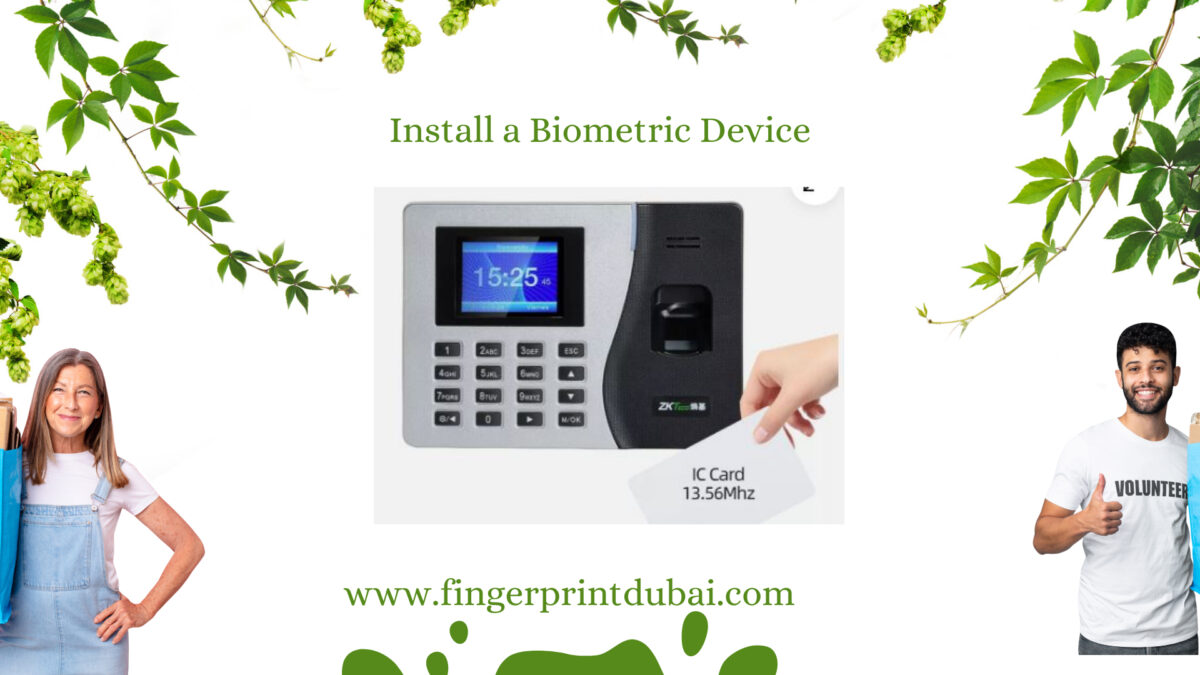Install a Biometric Device
How Do I Install a Biometric Device ABM Innovative Fze Biometric Device in My Office? A Step-by-Step Guide
Understanding the Basics of Biometric Devices
What is a Biometric Device? A biometric device is a security system that uses unique biological characteristics to identify individuals.
Why Should You Consider Biometric Devices for Your Office? Biometric access control Dubai devices offer a high level of security, reducing the risk of unauthorized access. They can also streamline your office’s operations by automating time and attendance tracking.
Step-by-Step Guide to Installing a Biometric Device
Assess Your Office’s Needs:
Identify the Purpose: Determine whether you need a device for access control, time and attendance tracking, or both.
Choose the Right Technology: Consider options like fingerprint scanners, facial recognition systems, or iris scanners.
Determine the Number of Devices: Calculate the number of devices needed based on your office layout and the number of employees.
Select a Reliable Vendor:
Research Reputable Brands: Look for vendors that offer quality products and excellent customer support.
Check Compatibility: Ensure the device is compatible with your existing security systems and software.
Consider Customization Options: Some vendors offer customization options to tailor the device to your specific needs.
Plan the Fingerprint Machine Installation:
Choose Installation Locations: Select strategic locations for the devices, such as entry points, reception areas, and employee workstations.
Prepare the Installation Area: Ensure the installation area is clean, accessible, and free of obstructions.
Coordinate with IT and Security Teams: Involve your IT and security teams to ensure smooth integration with your existing systems.
Follow the Manufacturer’s Instructions:
Refer to the User Manual: Carefully follow the manufacturer’s instructions for installation and configuration.
Connect the Device: Connect the device to a power source and network, if required.
Configure Settings: Customize settings such as user permissions, access levels, and alert notifications.
Test and Calibrate:
Enroll Employees: Enroll each employee’s biometric data into the system.
Test Functionality: Test the device’s performance by attempting to access restricted areas or clock in and out.
Calibrate the Device: Calibrate the device regularly to ensure accurate readings and optimal performance.
Frequently Asked Questions
How Secure Are Biometric Devices? Biometric devices are highly secure, as they rely on unique biological characteristics that are difficult to replicate. However, it’s essential to choose a reliable vendor and follow best practices for security.
Are Biometric Devices Easy to Use? Modern biometric devices are designed to be user-friendly. Most devices have intuitive interfaces and require minimal training.
How Often Do Biometric Devices Need Maintenance? Regular maintenance, such as cleaning the sensor and calibrating the device, is essential to ensure optimal performance. The frequency of maintenance may vary depending on the device and usage.
What Happens if a Biometric Device Malfunctions? Most biometric devices have backup options, such as PIN codes or access cards, to ensure uninterrupted access. It’s important to have a contingency plan in place to address potential malfunctions.
By following these steps and addressing common concerns, you can successfully install and implement biometric devices in your office, enhancing security and streamlining operations.
How to Install a Biometric Device in Your Office: A Step-by-Step Guide
Installing a biometric device in your office can significantly enhance security and streamline attendance tracking. Here’s a comprehensive guide on how to install a biometric device in your office:
- Choose the Right Biometric Device
Before you begin the installation process, it’s crucial to select the appropriate biometric device for your office needs:
Consider factors like office size, number of employees, and specific security requirements
Research different types of biometric devices, such as fingerprint scanners, facial recognition systems, or iris scanners
Consult with reputable vendors to find a device that fits your budget and technical specifications
- Prepare for Installation
Once you’ve chosen your biometric device, it’s time to prepare for the installation:
Identify the ideal location for the device, typically near entry points or high-traffic areas
Ensure a stable power source is available nearby
Check if network connectivity is required and available at the chosen location
First gather all basic necessary spare tools and drilling equipment for the biometric installation
- Install the Hardware
Now, let’s get down to the actual installation of the biometric device:
Mount the device securely on the wall or a stable surface
Connect the power supply to the device
If required, connect the device to your office network using an Ethernet cable or Wi-Fi
With the hardware in place, it’s time to set up the software:
Install the biometric device’s software on a designated computer or server, start
Read the manufacturer’s manual instructions for biometric attendance software installation and configuration
Ensure the software is compatible with your existing systems, such as your HR management software
- Configure the System
After installing the software, you’ll need to configure the biometric device:
Set up user accounts and access levels
Configure attendance tracking settings, if applicable
Test the device to ensure it’s functioning correctly
- Enroll Employees
Now that your biometric device is installed and configured, it’s time to enroll your employees:

Schedule enrollment sessions for all employees
Capture each employee’s biometric data (e.g., fingerprints, facial scans)
Provide training on how to use the biometric device correctly
- Integrate with Existing Systems & Install a Biometric Device
To maximize the benefits of your new biometric device, integrate it with your existing systems:
Connect the biometric device to your access control system, if applicable
Integrate the attendance data with your payroll or HR management software
Ensure data synchronization between the biometric device and other relevant systems
- Implement Security Measures
Protect the biometric data and system from potential threats:
Set up firewalls and encryption protocols
Regularly update the device’s firmware and software
Implement strict access controls for system administrators
- Train Employees and Administrators
Proper training is essential for the successful implementation of a biometric device:
Conduct training sessions for all employees on how to use & Install a Biometric Device
Provide in-depth training for system administrators on managing and maintaining the biometric system
Create user guides and quick reference materials for easy access
- Monitor and Maintain the System
To ensure your biometric device continues to function optimally:
Regularly check the device for any physical damage or wear
Monitor system performance and address any issues promptly
Schedule periodic maintenance and cleaning of the biometric device
By following these steps, you can successfully install a biometric device in your office, enhancing security and improving attendance tracking efficiency. Remember, the key to a successful biometric device installation lies in careful planning, proper configuration, and ongoing maintenance
Tags In
4th St, Al Quoz Cemetery, Oasis Mall, Waha Street, Dubai UAE
Email : info@fingerprintdubai.com
Tell : (+971) 052 5571309

